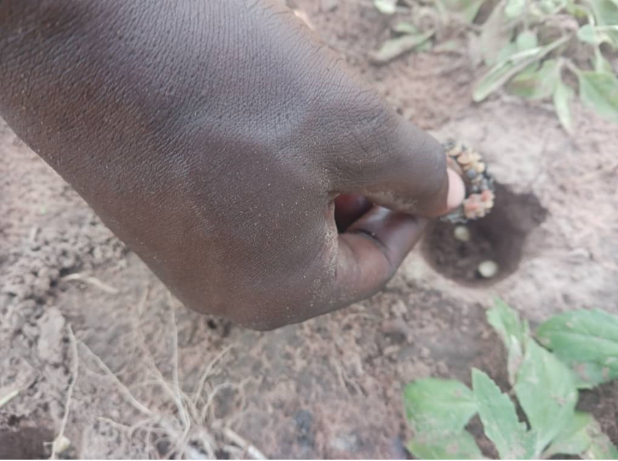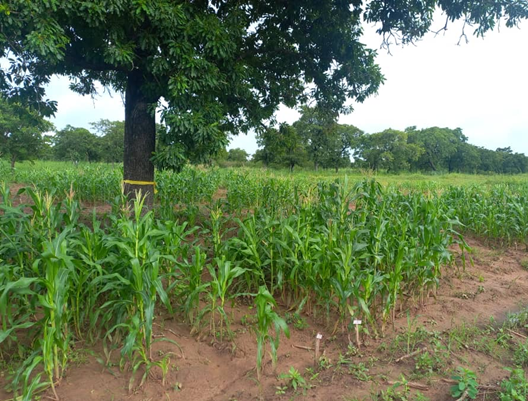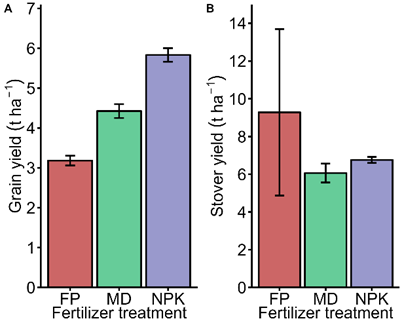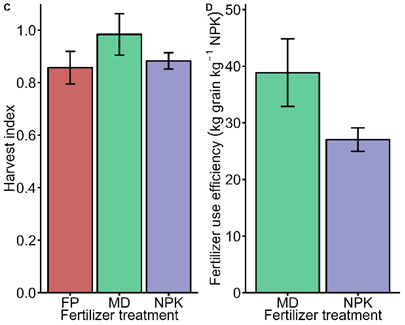Fertilizer microdosing (FM) is a technique that applies small amounts of fertilizer directly to the planting hole. This method has shown significant yield increases for cereals such as sorghum, millet, and maize across various regions in Sudano-Sahelian West Africa (SSWA). Despite its proven benefits, adoption remains low due to financial and labour constraints. This blog outlines the benefits, challenges, and recommendations to enhance the adoption of FM to improve food security and reduce poverty in the region.
Declining soil fertility, climate change, and reduced arable land threaten food security and poverty reduction in Sudano-Sahelian West Africa (SSWA). The inherent low fertility of soils in this region necessitates the adoption of efficient agricultural technologies such as agroforestry practices and mineral fertilizers.
Traditional broadcasting methods require larger quantities of fertilizer, which are often unaffordable. Fertilizer microdosing (FM) offers a more cost-effective alternative, increasing yields by 20-80% and improving the agronomic efficiency of fertilizers by approximately 50% compared to conventional methods.
Developed by the International Crop Research Institute for Semi-Arid Tropics (ICRISAT) in the 1990s, FM involves applying small doses (2-6g) of NPK fertilizer directly to the planting hole. This technique aims to maximize the efficiency of fertilizer use and significantly boost crop yields.
FM can be applied using various fertilizers, including diammonium phosphate (DAP), NPK 15-15-15, 17-17-17, and urea. The technique ensures optimal nutrient supply to cereals such as maize, millet, and sorghum. Combining FM with organic matter, seed priming, and water conservation strategies further enhances its effectiveness, especially in low rainfall regions. Research indicates that FM is most effective on medium to light-textured soils in areas receiving 600-1000 mm of annual rainfall.


Despite its benefits, FM adoption remains low in SSWA due to its labour-intensive nature as well as financial constraints, even with government subsidies. FM requires approximately 48 hours to fertilize one hectare, compared to 24 hours for basal placement and 8 hours for broadcasting. The financial burden at the onset of the rainy season, when food supplies are low, further limits farmers’ ability to invest in fertilizers. The increases in crop productivity and fertilizer efficiency of FM must outweigh the additional labour and financial costs. However, all reported results on microdosing have been obtained from crop monocultures whereas the dominant land use in most part of the countries where FM is promoted is agroforestry parkland.
To fill this vital research gap, the DecLaRe project started microdosing experiments in shea tree (Vitellaria paradoxa)-maize parklands in the Savannah Region of Ghana. Under the canopy of shea trees, the following fertilizer application methods were tested:
Microdosed plots produced grain yield that were 39% greater than grain yield from plots with no fertilizer application (Fig. 2A). However, grain yield from MD plots was 24% lower than those from the NPK plots. Average stover yield of MD and NPK plots was 31% lower than stover yield from unfertilized plots (Fig. 2B). Harvest index, a measure of reproductive efficiency, showed that maize from MD plots was 11% more efficient reproductively than average reproductive efficiency of maize from no fertilizer and NPK plots (Fig. 2C). Fertilizer use efficiency data showed that for every kg of fertilizer used, maize from MD and NPK plots on average produced 39 kg and 27 kg of grains, respectively (Fig. 2D). This shows that maize in MD plots was 44% more efficient in fertilizer use than their NPK counterparts. Higher reproductive and fertilizer use efficiencies of MD fertilized maize resulted from higher concentration of nutrients (mainly P and N) at the time of seedling germination that boosted roots growth thereby enhancing nutrient uptake from the soil.
Our data show that resource poor smallholder farmers can enhance maize productivity in the Savannah Region of Ghana when they adopt fertilizer microdosing. Fertilizer microdosing can produce grain yield comparable to the national recommended fertilizer application albeit leading to greater reproductive and fertilizer use efficiencies. With a fertilizer application rate that is 2.5-times lower than the national recommended rate, FM eases production cost pressures on poor farmers.


Adopting FM can significantly enhance cereal productivity in SSWA, easing production costs for resource-poor farmers and improving food security. By addressing financial and labour constraints, and promoting FM through targetted policies and support, the region can achieve sustainable agricultural growth. To this end and based on preliminary research conducted by the DecLaRe team, the following recommendations can be made:
All photos and graphs courtesy of DecLaRe.